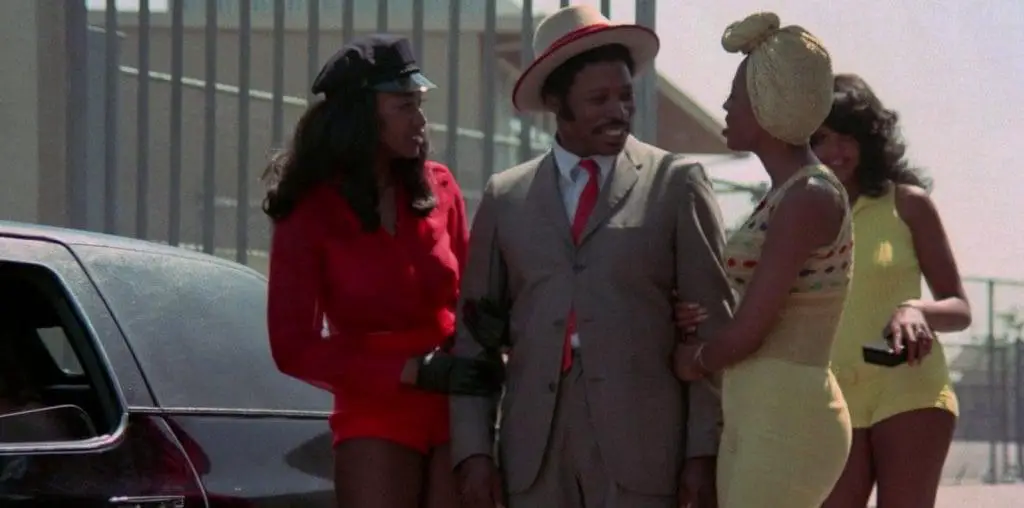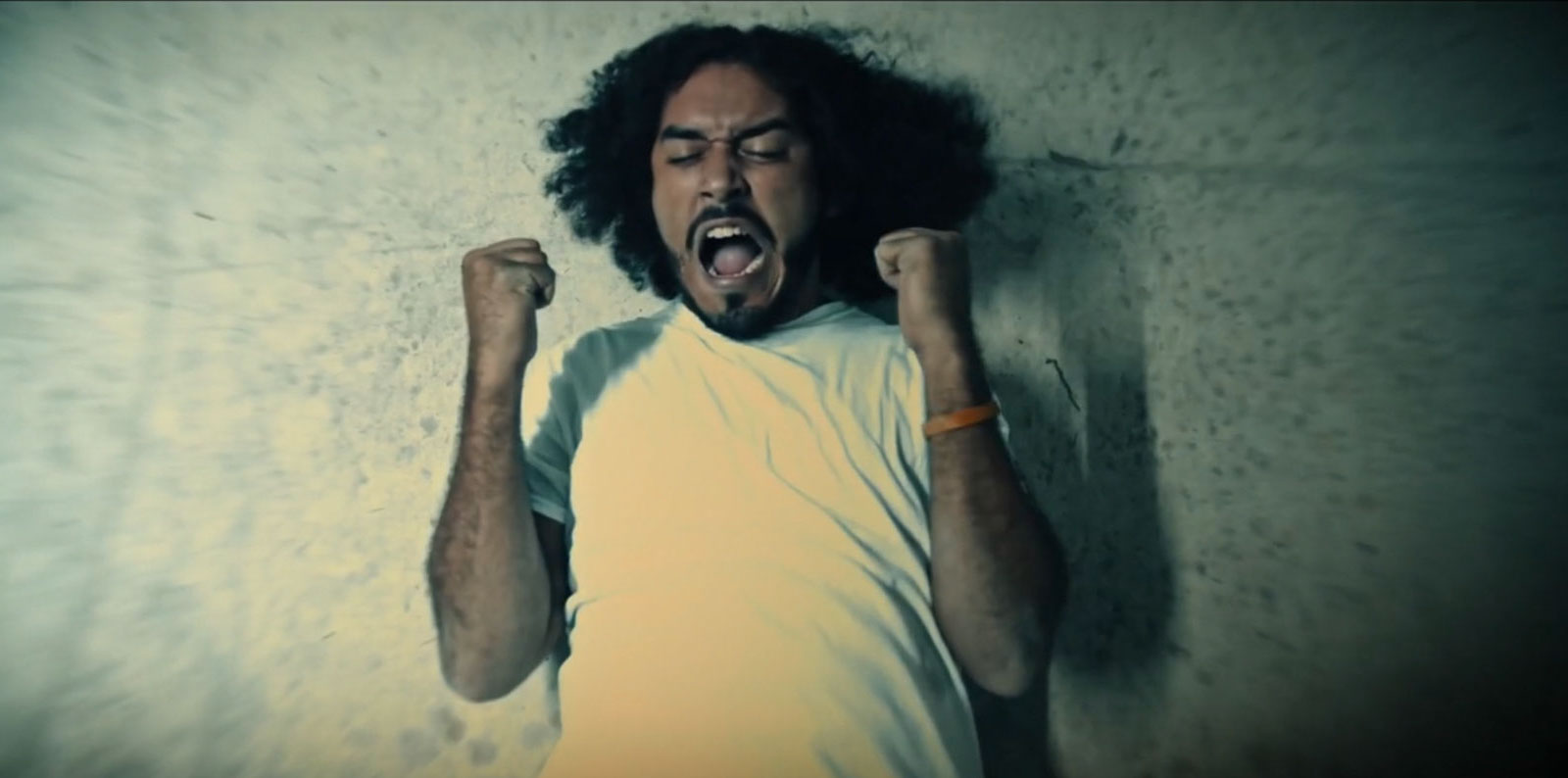
“You have to accept that you have somebody who is partly one of the greatest writers of the 20th century…and partly an alternately impish and furious 11-year-old boy. Or possibly 9-year-old boy. Or possibly a 5-year-old boy. And it’s all part of the same thing…and at the same time a cranky old Jew whose does not enjoy his cranky old Jewdom, he revels in it. He is building this cranky old Jewdom like some people live in castles, he lives in Cranky Jew World.” – Science fiction/fantasy writer Neil Gaiman on…
Harlan Ellison is a large part of the reason why you are reading these words (please allow me a few simple self-serving scene-setting sentences). Now don’t get me wrong, I don’t mean to say that he came to me in some urgent Technicolor inner vision and possessed me and physically made me write them, like some sort of deranged updating of the ‘automatic writing’ experiments of Andre Breton and the surrealists (he wouldn’t make me write on a Mac for one thing; he’d make me use a typewriter, cos he loathes writing on computers). No, I mean the far more prose-prosaic reason Film Threat first caught my eye in its antediluvian magazine incarnation back in 1987, when I was 17, was because of Harlan Ellison.
I can remember this it like it was only, oh, two decades ago. I had heard of Ellison in “Danse Macabre” by Stephen King, and had bought my first couple of Ellison books (including the classic “Deathbird Stories,” still one of my all-time favorite volumes) from the long-defunct Science Fiction Bookshop in West Broughton Street in Edinburgh in Scotland. Through there one Saturday from my home town of Falkirk to blow my $50-a-week Youth Training Scheme (don’t ask – it still gives me shivers) ‘wages,’ I saw the grey cover of issue 12 of Film Threat on a shelf, and spied Ellison’s name on it. I opened up the mag and saw that he hadn’t actually written anything for the mag but that the editor, some cheeky-sounding character named Chris Gore, had received two letters from the writer and cunningly put Ellison’s name on the cover to draw in unsuspecting could-be buyers like myself.
Well, it worked. Obviously.
Gore had written to the (in)famous writer and asked him to do something for Film Threat, saying (and I’m copying from the mag as I write this to get the quotes absolutely right), subtly and endearingly, “I heard you don’t even take a piss for free.” Ellison, in his inimitable smartass pathological-need-to-engage-and-enrage style, had replied that he had “indeed taken a piss for free; many times,” and then went on to enumerate legions of those who had received a splash of his Jewish pish gratis, including many religious and political figures, as well as an eclectic, humorous smorgasbord of random sort-of-deserving targets including “good Germans” and “recently converted feminists trying to assuage their guilt for having spent years as pom-pom girls or porn stars.”
The erstwhile FT editor wrote back to the ranting scribe again, offering him $200, which Ellison turned down, stating “though Film Threat is clearly one of the venues that posterity will consult to evaluate my ultimate worth” (more than a slight touch of sarcasm here, methinks, seeing as how the mag was virtually unknown at that time), “it ain’t in the cards for the foreseeable…” I perused the rest of the rag, it seemed funny (Gore suggesting to one person in the letters pages that he kill himself because he was so petty; that attitude fit my teenage anger like a glove at the time), and I bought it and took it home. Became a regular reader. And I am still not sure to this day whether that is one of the best or worst things that ever happened to me.
Only kidding, Chris. It was clearly one of the worst, no competition.
(Chuckle)
Anyway, after a mere two decades and many strange adventures (some in part because of Film Threat and its anarchic effect on my life) along the way, I am here to write about a new documentary about Harlan Ellison that will help evaluate the cranky, controversial, cantankerous Jewish writer’s ultimate worth. Things have not entirely come full circle, I admit, and it’s a bit of a streeeeeeeeeeeeetch loose-ends-tied-up-wise, but it’s good enough for me, okay? Okay.
“Dreams With Sharp Teeth” (named after a three-volume Ellison omnibus) is the name of the new 95-minute documentary, and it represents the end of five years of on-and-off shooting by its writer/director Erik Nelson who produced, among many other features, the excellent and disturbing 2005 feature “Grizzly Man.” Nelson also includes a piece of footage he shot in 1981 for a PBS Special on Ellison, whom he first met at a San Jose signing in 1977, when the director was still in high school. Asked what it was that appealed to him about Ellison, Nelson replies simply: “The swagger. The confidence. The introspection.” And he says of the documentary, and of its subject, that “what you see in the film is what you get. It is as true as I could make it to the writer I admire, and the guy I followed around for those many years.”
Harlan Ellison has, since 1955, written and published 75 books, 1700 stories and articles in 40 languages, having made his name in the science fiction genre. But if you said that to him he’d probably berate you for your lack of genre-nomenclature imagination, because he believes he writes ‘speculative fiction’ and will argue to the death about it. He is also is one of the most honored writers in the English language, having won 8.5 Hugo Awards, 4 Nebula Awards, 2 Mystery Genre Awards, 4 Writers Guild Awards For Outstanding Teleplay (though he’s so prolific that since this list was compiled it’s probably way longer by now, as will be the one documenting how much he has written and published!). Which is why it seems a bit odd that it has taken until the man’s early 70s to make a film about him.
Read more about Harlan Ellison and “Dreams with Sharp Teeth” in Eternally Angry Eye Candy (Part 2)>>>

